| Zeitschrift Umělec 2004/4 >> The Artists of the Bog Empire | Übersicht aller Ausgaben | ||||||||||||
|
|||||||||||||
The Artists of the Bog EmpireZeitschrift Umělec 2004/401.04.2004 Olga Kovalenková | Belarus | en cs |
|||||||||||||
|
Paradoxically enough, Belarusian cultural scene seems to have quite a lot of gifted contemporary artists, but no contemporary art.
Ideological, philosophical and stylistic trends of the last decade, associated with contemporary art in the West, have not yet been analyzed intellectually or popularized among the general public in Belarus. As such, it is easy to manipulate the consciousness of the individual in which there is a substitution of concepts: Official quasi-realistic art, decorative "modern art" of salons and even kitsch are naively accepted as good contemporary art. So actual contemporary art has zero chance of being in demand or establishing itself as a cohesive social and cultural phenomenon. There is very little concern about the actual state of things by our professional artistic elite, since the acceptance of the status quo has a universal character. The adherents of Western contemporary art on our cultural scene are convinced it can go on living “partisan style” or phantom-like. It is “sort of” present. (By the way, all advanced contemporaries of poststructuralism and postmodernism are forever saying “sort of”!). “Sort of present” in fact means “sort of absent.” Let us face the facts: The patient is more dead than alive. If contemporary Belarusian art is “sort of present” in Clermont-Ferrand (there was a major exhibition of contemporary Belarusian art in Clermont-Ferrand in 2003), Amsterdam or elsewhere but absent from Belarus, it sounds absurd. Of course Belarus cannot equal France in terms of cultural development and it is much more pleasant to discuss problems of contemporary art with a European intellectual than some curious gawker from the outskirts of Minsk. I am not going in for demagoguery on the subject of “the Masses and Art.” I only know it would be immoral to brush aside the “profane” interest in the sacred “elite” realm. In that case all talking about “educating the public” would have zero result. Using “partisan” vocabulary, to survive, partisan detachments need a well-developed infrastructure to support it. Without a network of professional communication, which involves joint efforts of museums, critics, galleries and publishers, contemporary art in Belarus will remain a phantom. Everybody knows phantoms cannot live long… We should discuss opportunities and forms of functioning of the contemporary art in space of classical museums, we should speak polemically about concepts of contemporary art’s museums. Unfortunately our state museums are certainly an exclusion zone for contemporary art, the official cultural policies banning all conceptualists, postmodernists and so on from their collections. But I would like to be a historical optimist. For example, we should work out an efficient alternative to the state-subsidized network. After all, there are nongovernmental cultural institutions functioning successfully all around the world. Apart from lack of demand for contemporary art and its poor infrastructure, we have another cause for anxiety. I am referring to the brain drain among gifted creative persons of art, the brain drain that can take on many forms. Some artists leave Belarus forever, some prefer other, more profitable fields of activity, and some live in Belarus, but organize their own exhibitions only outside the country. Arthur Klinov, Ruslan Vashkevich, Sergei Voichenko and Vladimir Tsesler are among those few artists who persistently indulge in creative practices in their home country, combining them with successful overseas projects. The Balota Empire The 2004 exhibition entitled “Balota Empire,” after the Belorusian word for bog, is devoted to the problem of national-cultural identity and encompasses a multiplicity of actual questions and subjects that excite the majority of representatives of the Belarusian culture. This project represents the interesting and bright phenomena in Belarusian art today. As far back as the beginning of the 20th century Belarusian historians and philosophers addressed the fact that Belarusians had not definitely shaped themselves up among European nations, and emphasized that Belarusians had become neither a people of Eastern nor Western Europe. The Soviets’ official version of Belarusian history aroused the inferiority complex among its people through creating the image of eternal cultural and an intellectual province. Up to this day, Belarus as an object of being and subject of history, geopolitics, and culture has not been carefully analyzed and reflected on. The true picture of Belarusian ethnos remains unclear both to Belarusians and the whole world. At the same time in post-soviet Belarus, despite all the contradictions and problems of its social, political, and cultural development, its national identity is beginning to awaken, alongside a new sense of freedom from the myths and stereotypes of Soviet ideology, and is finally starting to reposition itself within other historical and cultural contexts. This is the start of the designing of a new Belarusian discourse. The “Balota Empire” exhibition project is a step towards this. The participants of the project attempt to give their own versions of visual codes for the identification of today’s Belarusian mentality. A witty play on common clichés and stereotypes of viewing Belarusians, not only by other nations, but also by Belarusians themselves, as well as irony, which is pretty savage but deprived of the disapprovingly negative shade typical of the hardcore postmodernist pastiche, is used by them as a means of experiencing a purifying catharsis. It gives the native spectator an opportunity to look at himself, his phobias and complexes (often smiling through tears), and the foreign one to view Belarusians as more than just Other and Different. Investigating Belarusian mentality, artists act as analysts of the Human Mind. Contemporary Belarusian historians, philosophers and culturologists, when studying Belarusian mentality have repeatedly emphasized that it includes an archetype of a Bog. It is noteworthy that the image of a bog either as a direct representation of a boggy scenery (who would deny the particular and mystical beauty of this natural phenomenon?) or as a metaphor is found in many works of Belarusian literature and art. The sleepy tranquility and peacefulness of boggy areas are deceitful. Behind them hides the unpredictable guile and stubbornness of nature, which resists any outward violence, although this resistance is concealed in its depths up to a certain point. A bog is a weird, even mystical substance. It is impossible to build something on a bog, for it will inevitably drag, digest, dissolve in its guts any alien “body.” However, it is equally impossible to completely destroy this substance, it is risky to challenge its seemingly chronic apathy. The destructive energy of the aroused element can turn into an apocalyptic tempest, the consequences of which will be fatal. Today’s “People on the Bog” (this is the name that was given to Belarusians in a novel written in the middle of the 20th century by the writer Ivan Melezh), retain in their genetic memory the echoes of the ages-old geopolitical, military, and socio-cultural dramas of their nation; but they have almost lost their native language and have a fatally illogical substructure dissociated from rational analysis. Perhaps it is the artist who, with an aptitude for a supersensitive penetration into the essence of the universal order, will be able to find a code for the solution of the puzzle of the blank spot in the geographical center of Europe and to realize and reflect on the “collective unconscious” of the White Russ. The exhibition unites several independent projects linked by one common theme. Arthur Klinov has shown two works. Created as “total installations,” they include object and painting as well as architecture, a sound and musical component and even spectators, whose emotional responses and commentaries become part of the common “performance.” The artist tries to “wash away” the boundaries between the esthetic and real space. In his installation “A Sweet Straw Life III” (2004), Klinov represents the space of a room of an average family with a bed, television, a mirror and an aquarium. The artist hangs pictures and family photos on the walls, and decorates the interior with a “luxurious” chandelier. Everything in this room is “up to the mark” to protect the residents from feeling inferior to their neighbors. Even the hosts are present in this plain and tranquil world. The husband is peacefully lying in bed and the wife, as is commonly required of a traditional mother in a family, is busy about the house. A good simplistic life with its routine events and truths. Everything is recognizable and customary. There is only thing that is not customary: The entirety of this, together with the characters, is made of…straw. The artist is sensitive to the chosen material, he can make full use of all its plastic as well as imagery and metaphorical properties, and this doubles the emotional and psychological influence of his work. It is certainly absurd to “privatize” straw as solely Belarusian, long-standing traditional material. However, in the given context this works, and allusions emerge, because Belarusians have long been using straw in construction works and in making utensils and folk crafts. Arthur Klinov possesses a sharp feeling of context and an ability to arouse a very emotional spectator’s response by purely rational means. The artist drags the spectator both physically and intellectually into the three-dimensional space of his work, making him not only the observer, but also the participant, a character in this provocative scene. Getting into this straw world, one acquires a sweet and peaceful feeling as his intellectual capacity and even his whole consciousness slow down their activity against his will. The golden color of the straw, as if radiating warmth and its lulling rustling under the feet envelope the spectator with a dream and the promise of simple and unpretentious human happiness. A common theme for Klinov’s latest works is the investigation of various forms of consciousness and the illusions, preferences, fears that it evokes in an authoritarian and bureaucratic society. “A sweet straw life” is a striking and venomous metaphor of the boggy apathy and peacefulness, of the “vegetable” state, which characterize a certain part of our society. However, this straw happiness is ephemeral just like the material that was used to create it. The straw blazes up instantaneously and burns beautifully but rapidly, not even leaving an impressive site of fire afterwards. (The act of burning the installation, just like the final curtain or a severe summing-up conclusion has been performed by the author in some previous versions of the straw project.) This is also a striking metaphor, which, however, does not imply peace and happiness. A second Klinov installation called “Movable Partisan Boutique” (2004) also represents an aspect of the Belarusian national character. For several years already, the artist has been working out the “partisan” theme. He claims that the archetype of a partisan is deeply rooted in the national subconscious and “partisan” is an alter ego of any Belarusian. This is the way in which the life of the nation and the national character has been shaped over numerous wars abroad or at home in battles over Belarusian soil over the centuries. The immediate links between the archetypes of a Bog and a Partisan can be easily seen. A partisan feels good in his native bog, where he perfectly knows every single bush and hummock and where he can hide himself when necessary; a foreigner who gets into that risks disappearing in these unfamiliar waters forever. However, partisan life is no picnic. The movable boutique is a special form of entertainment for a partisan. One can find all that is needed for life and even more than that in it: matches, soap, bread, plaster money-boxes, an apparatus for home-brewing, rubber women, old porn magazines, lace curtains, pictures of leaders of past and present, maps of various areas and cities, all kinds of documents (trade union membership cards, personal work history cards, American visas, streetcar tickets), works of art by old and modern artists, wall rugs with swans and deer, CDs with music, etc. Klinov takes these routine objects out of their usual surrounding and places them into a conditional space, which has different implications. In the installation this “rubbish” is carefully arranged, catalogued, divided into communicative entities, which get an entirely new store of energy from the new environment. As a result, the space created by the artist acquires a more trenchant content and has a much broader meaning than the objects placed into it. Moreover, using the local rubbish of the local context, Klinov transforms its usual existence into a metaphor, which describes the universal order of things. His images and characters allow many interpretations that spectators give them, depending on the type of their own “characters”. Ruslan Vashkevich’s creative activity can be defined as “interbreed actionism,” since the artist combines various means, techniques and forms: painting, art objects, installations, performance and – lately – verbal texts. At the same time it is a painted picture that forms the basis of nearly all his projects. This frame of creative activity is not quite relevant for today’s art. However, he considers it ideal terrain for experiments. In his works one can hardly find values traditional for painting: the expression and richness of colours based on the flexibility of juxtapositions, diversity of contrasts and subtlety of tonal transitions. A painted picture gets through a series of metamorphoses and eventually emancipates from a variety of rules and conditions of its existence that have been formed over centuries. Vashkevich’s pictures are made by traditional means of painting but, due to their inherent impulse, they belong to our time of total digitalization and virtualization, with an aggressive expansion of visual mass-media culture into the world of human relations. Their color compositions, drawn to the metaphysical asceticism of achromatic painting, strike the eyes with shocking contrasts of additional colors. At the same time the sterility and coldness of the high tech style is alien to Vashkevich. His works, especially of the latest period, contrary to the contemporary technicism, are deliberately hand-made. The artist’s emotions seems to pulsate in them, at times losing the regularity of beat. The artist shares all the complexes and neuroses of today’s world and responds to the stresses that attack the human mind. He is getting more and more interested in the personal world of each man separately, the rare and unique experiences of weird people. Vashkevich’s project called The Country of Utopia (2004) is densely populated with weird characters: half-people, half-animals, half-fish, whose mystical images one can encounter in folklore stories and legends of the Belarusian Polessie. In the interpretation of the artist, they acquire unexpected appearances deprived of any evil or fearful traits. The famous movie character Crocodile Dundee (2004) is also here – God knows how he has got into the Belarusian bog, settled down among its waters and fogs and turned into a funny little forest-man. And the beautiful and capricious mermaid, who is an object of passion and hidden desires of tiny lean boggy people (We Are All Longing for Love, 2004). The kindly irony with which the characters are painted turns them into harmless and even attractive creatures, as if taking away the feeling of anxiety and danger that the artist gets when he encounters the monstrous element of the Bog. The image of the Bog for Vashkevich is first and foremost the image of Threat, of an infinite Deadlock, the hidden Aggressiveness and Inertia that deprive man of his will. This topic is implied in all his works and is materialized in the color and plasticity of his object-pictures. It even appears in their unexpected formats, distorted and curved, changing from work to work. However, Vashkevich is not going to surrender, to get drowned in a bog, choke in its miasmas. He plans an escape, seeks for ways of getting over it (A Plan of Escape, 2003; Wall, 2003), looks for means and forms of fighting with it. He carries the images of his works to the point of theatrical absurdity, phantasmagoria, which is not gloomy and hopeless but heedless and merrily stubborn. The artist is trying to help the injured subconscious of the population of the Boggy Empire to overcome its fears and complexes, to get over the state of post-traumatic frustration. Under the boggy hummocks and bushes he “digs” his “trap mines”: A Deep Forest Kiss (2003), High and Low (2004). The buoyant audacity of these works is like a deafening and challenging burst of laughter that transforms into an “art-shell” and ruins the enemy both physically and morally no worse than an air bomb. This ironical and cheerful mood is typical of other works of Vashkevich’s that give an outline of the national character. Making use and transforming the style of naďve photographic cards of the mid-20th century with dreamy beauties, pigeons and lines of entangled hearts the artist paints his Partisan’s Madonna (2003) who carelessly smokes a cigarette. His picture Milk and Roses (2001) contains a whole range of stereotyped symbols and attributes of “wealth”, “success”, “happiness”, fixed in the consciousness of a simpleton (naked ladies, number 21 [the lucky number in a card game] painted hearts with decorations etc.) These cards could easily be found in a pocket of some local “partisan” who could look at them in his poor hut and daydream about a “beautiful” life. Vashkevich likes these naďve aborigines of the Boggy Empire in his own way, he sympathizes with them and mocks their absurdity. Sometimes there is an impression that he associates himself with them, as if feeling some deep connections with them and thus taking the responsibility for their sorrows, fears and ridiculous joys. The steady tandem of Vladimir Tsesler & Sergei Voichenko prefer to work with the visual images of the object world in which their characters dwell, or could hypothetically dwell. The artists transform these images into plastic signs, communicative and symbolic codes that allow penetrating into the mentality and element of the people whom they represent. The artists have created a unique encyclopedia of myths of our today’s native reality. This encyclopedia is embodied in posters, objects, painting pictures. Their works are characterized by a paradoxical unity of word and representation, feeling and intellectual reflection, material substantiality and its virtual presentation. The very object of study, i.e. the representation of the hero, the “local” man is normally absent from works, since, in the opinion of the artist, it is virtual, not actual. However, his character, values, behavior, even the outward appearance gradually manifest themselves in the process of spectators’ interpretation of the visual texts. The core work of Tsesler & Voichenko’s project is a large (66x170x70cm) painted coffer. This object called Skarb (treasure) is a plastic, representational and verbal formula of wealth, richness, heritage. The coffer is a storage of family treasures and rarities of the “Boggy civilization,” a “trace of its history.” From the point of view of a pure form the plastic sign offered by the artists is simplistic and obvious, even affected. However, its artistic presentation and arrangement take it beyond banality, turning it into an aesthetically comprehensive and real-value image. The spectator sees a work of art that has a perfectly tangible form and a multi-meaningful content. The artistic representation of an object is postmodernistic in its ironic bizarreness and excessiveness. The basic “cofferic” form is luxuriously decorated with painting which covers each and every square of its surface. Tsesler &Voichenko interpret this classical art with such aesthetic radicalism and rationalism of an inventor that all spectators irrespective of their aesthetic competence would ask, “How is it done?” The synthesis, the unity of discordant elements lays the basis for almost all works of the two artists and shapes their creative method. Technically they synthesize elements of classical oil painting on canvas with photographic technologies, computer processing, new techniques of computer printing. Aesthetically they unite past and present, “high” and “low”. Hyperrealistic naked women, a sort of contemporary mermaids dressed in Golden Lady pantyhose, are neighboring samples of Belarusian classical art, the famous portraits of the 17th and 18th centuries from the Nesvizh collection of the Radzivill family. Going back to Tsesler &Voichenco’s virtual hero, we can claim that, being the proprietor of this exclusive object, he is not at all plain but is fond of the esthetic, Rabelaisian excessiveness and at the same time tends to have a sarcastic and paradoxical worldview. This topic is being developed in other works. For example, in the series of posters “Local Delicatessen” (2003 – 2004) one can find a bunch of roses in which the white buds are replaced by large delicious pelmeni and an appetizing roasted leg of mutton lying soberly in a refined violin-case. The means of transport are exquisite and extravagant. Locomotive Mikolka ą I, II, III, IV (2001, computer graphics) is the highest achievement of the Boggy Empire’s science, technology and art. They are carefully worked out, uselessly imposing and filled with imperial greatness. Three artists offer three views of a person from a secluded boggy area—three aspects of people’s lives from the land of bogs and forests. Out of these diametrically opposite views and characteristics, “momentary” sketches and well-prepared “investigations,” one can form a multi-dimensional and interesting collective image of the main character. We face a subject who has an inborn capacity to survive despite the conditions, despite any unfavourable situation. His organism is biologically and psychologically balanced, that is why it is resistant to stresses. He is now lazy and cynical to a degree, now smart and resourceful, and in certain conditions hard-working. He can be content with very little and also aspires to something great. He would better temporize than manifest aggression but, when necessary, can protect himself and his property. He has a matter-of-fact attitude to the world and stands firmly on the ground. He has his own perspectives and horizons. And this brings us hope and optimism even in the foggy indefiniteness of boggy waters. The problem of national identity will obviously never lose its importance, not only for smaller countries and nations, but also to the world’s superpowers. The idea of identity has been repeatedly used as a means to solving many political and cultural dilemmas. Through realizing his identity man becomes a subject and successor of the national history and culture. Through realizing his identity he acquires an opportunity to create a National Text, which is the main and only condition of the nation’s spiritual birth and survival.
01.04.2004
Empfohlene Artikel
|
|||||||||||||
|
04.02.2020 10:17
Letošní 50. ročník Art Basel přilákal celkem 93 000 návštěvníků a sběratelů z 80 zemí světa. 290 prémiových galerií představilo umělecká díla od počátku 20. století až po současnost. Hlavní sektor přehlídky, tradičně v prvním patře výstavního prostoru, představil 232 předních galerií z celého světa nabízející umění nejvyšší kvality. Veletrh ukázal vzestupný trend prodeje prostřednictvím galerií jak soukromým sbírkám, tak i institucím. Kromě hlavního veletrhu stály za návštěvu i ty přidružené: Volta, Liste a Photo Basel, k tomu doprovodné programy a výstavy v místních institucích, které kvalitou daleko přesahují hranice města tj. Kunsthalle Basel, Kunstmuseum, Tinguely muzeum nebo Fondation Beyeler.
|








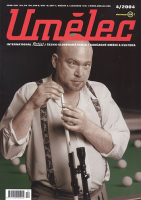




























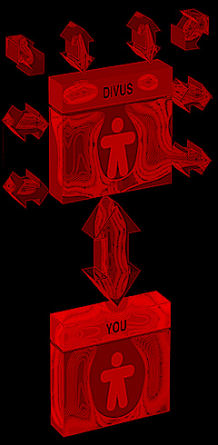






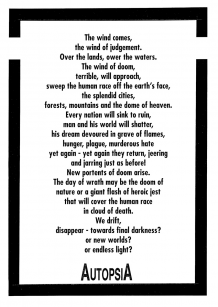




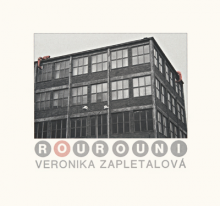
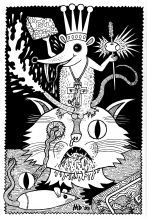
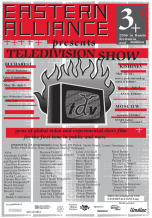
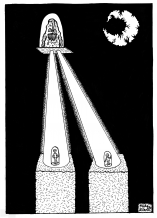


 We Are Rising National Gallery For You! Go to Kyjov by Krásná Lípa no.37.
We Are Rising National Gallery For You! Go to Kyjov by Krásná Lípa no.37.
Kommentar
Der Artikel ist bisher nicht kommentiert wordenNeuen Kommentar einfügen